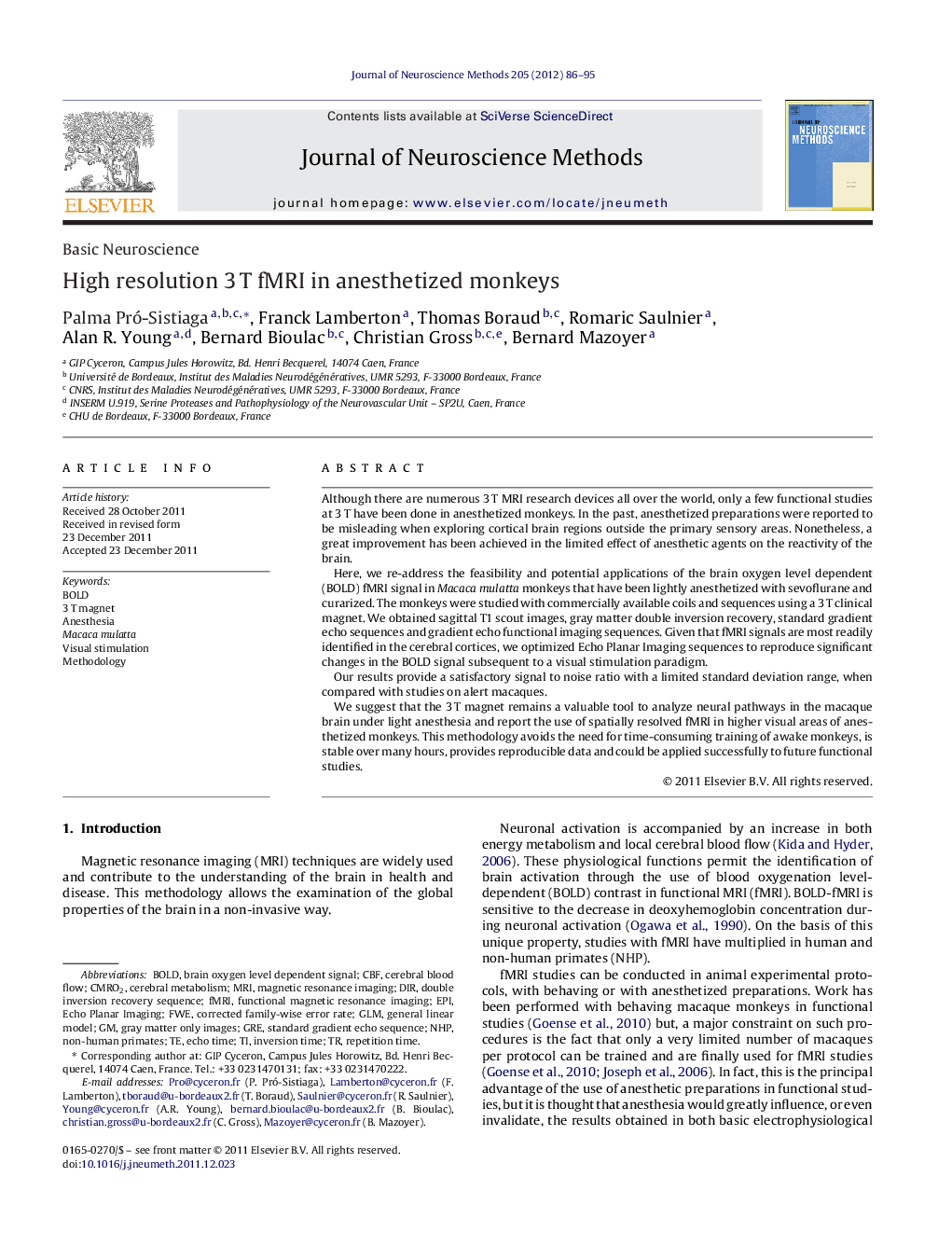| Article ID | Journal | Published Year | Pages | File Type |
|---|---|---|---|---|
| 6269506 | Journal of Neuroscience Methods | 2012 | 10 Pages |
Although there are numerous 3Â T MRI research devices all over the world, only a few functional studies at 3Â T have been done in anesthetized monkeys. In the past, anesthetized preparations were reported to be misleading when exploring cortical brain regions outside the primary sensory areas. Nonetheless, a great improvement has been achieved in the limited effect of anesthetic agents on the reactivity of the brain.Here, we re-address the feasibility and potential applications of the brain oxygen level dependent (BOLD) fMRI signal in Macaca mulatta monkeys that have been lightly anesthetized with sevoflurane and curarized. The monkeys were studied with commercially available coils and sequences using a 3Â T clinical magnet. We obtained sagittal T1 scout images, gray matter double inversion recovery, standard gradient echo sequences and gradient echo functional imaging sequences. Given that fMRI signals are most readily identified in the cerebral cortices, we optimized Echo Planar Imaging sequences to reproduce significant changes in the BOLD signal subsequent to a visual stimulation paradigm.Our results provide a satisfactory signal to noise ratio with a limited standard deviation range, when compared with studies on alert macaques.We suggest that the 3Â T magnet remains a valuable tool to analyze neural pathways in the macaque brain under light anesthesia and report the use of spatially resolved fMRI in higher visual areas of anesthetized monkeys. This methodology avoids the need for time-consuming training of awake monkeys, is stable over many hours, provides reproducible data and could be applied successfully to future functional studies.
⺠We performed a fMRI study with anesthetized Macaca mulatta monkeys at 3 T. ⺠Evidence of pathway functionality of the visual system in a non-behaving primate. ⺠A complete overview has been provided for functional imaging of pathways. ⺠Opens the possibility of 3 T fMRI with anesthetized primates to other complex attempts.
